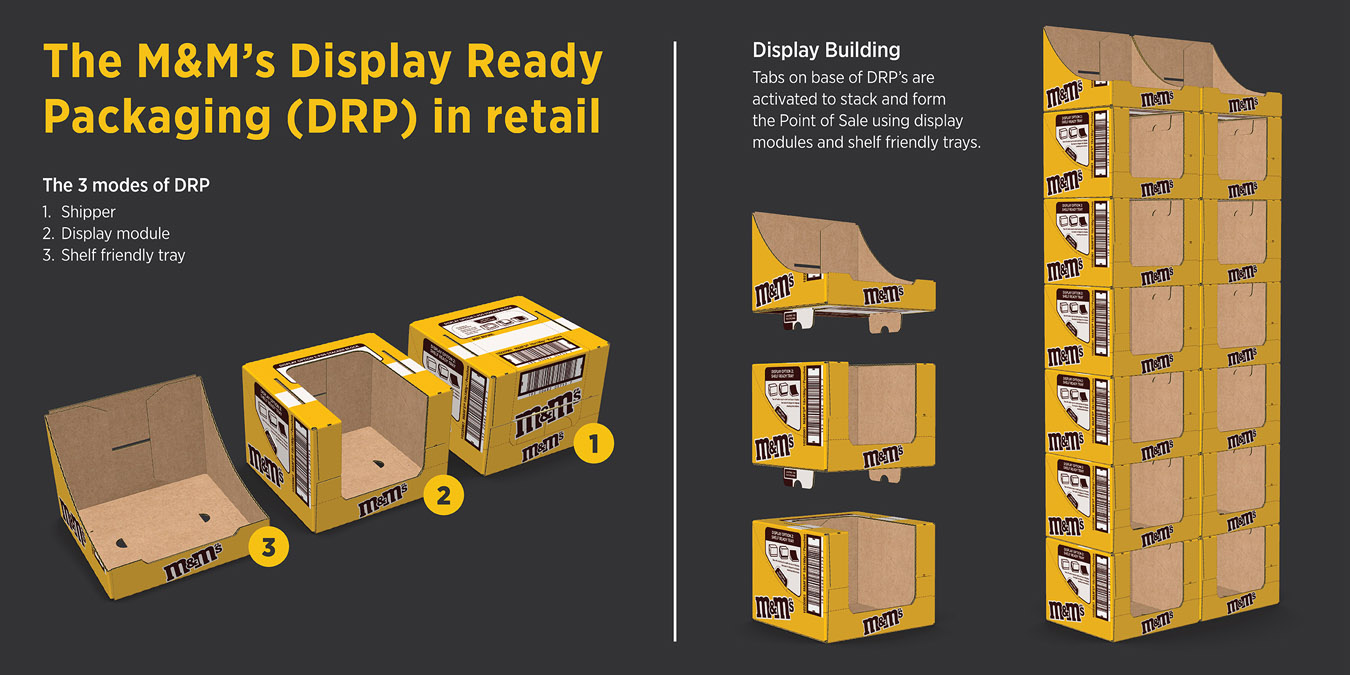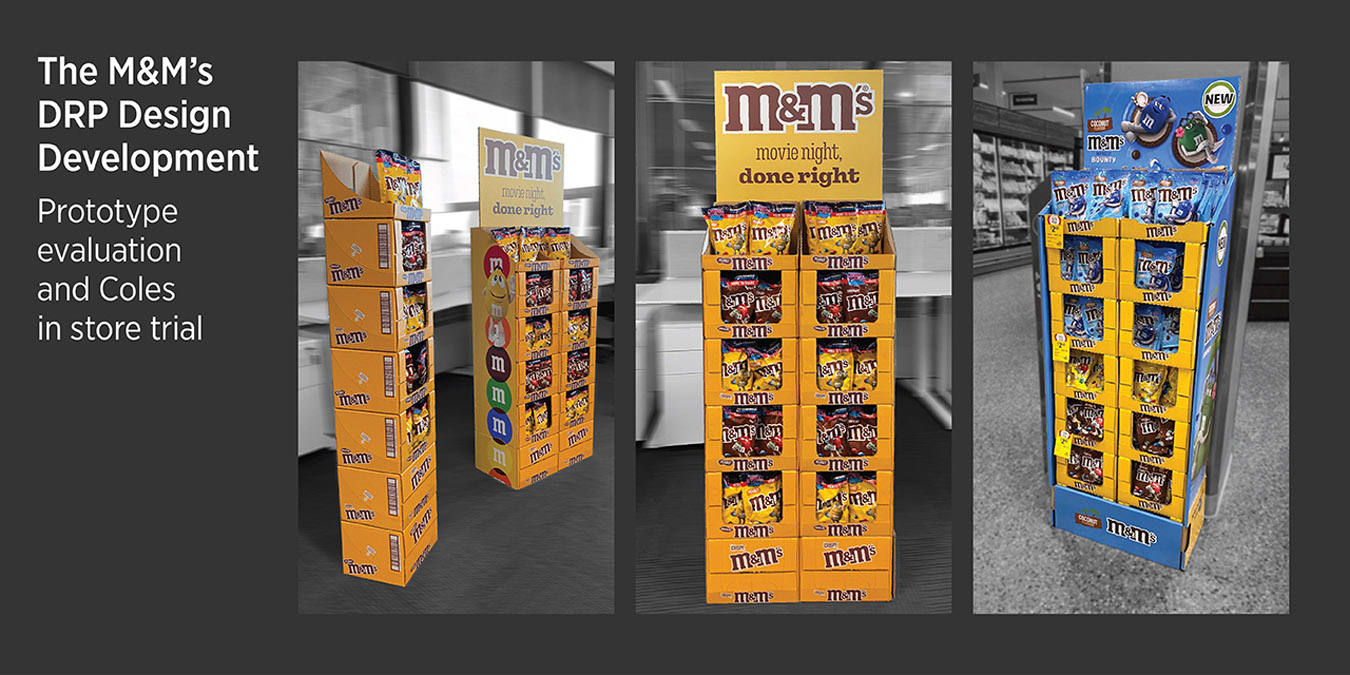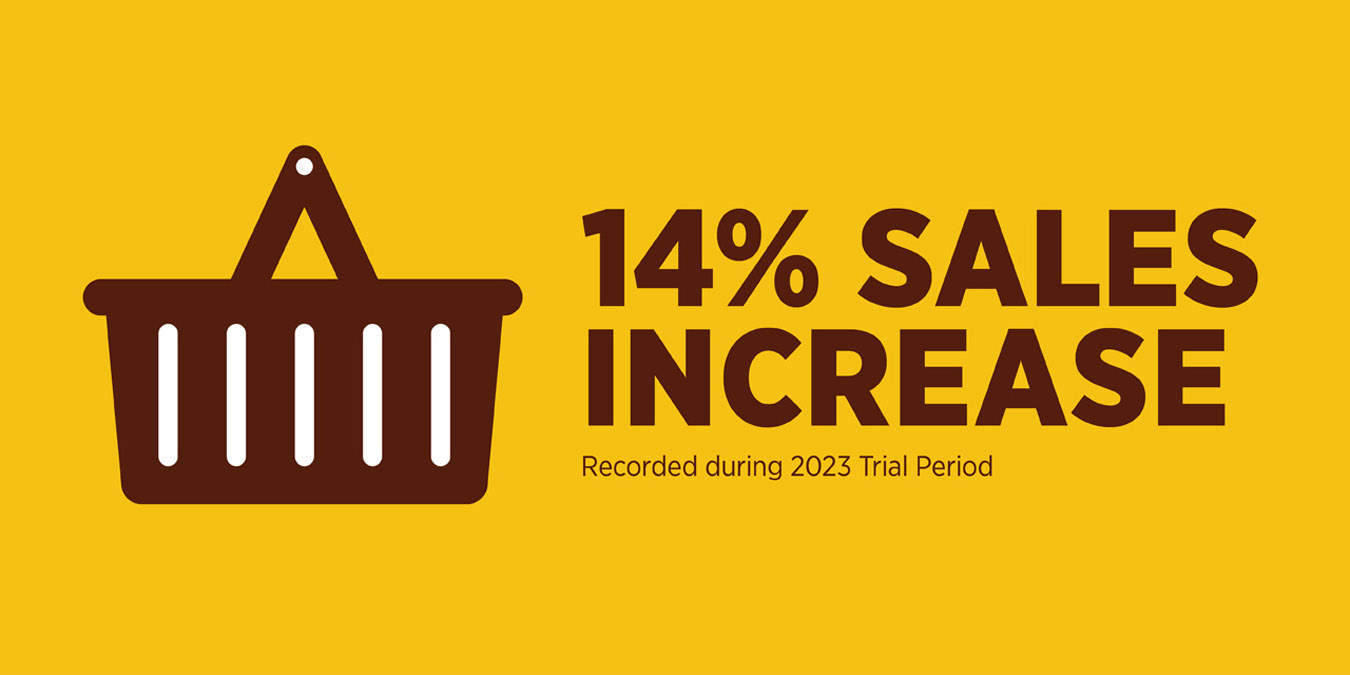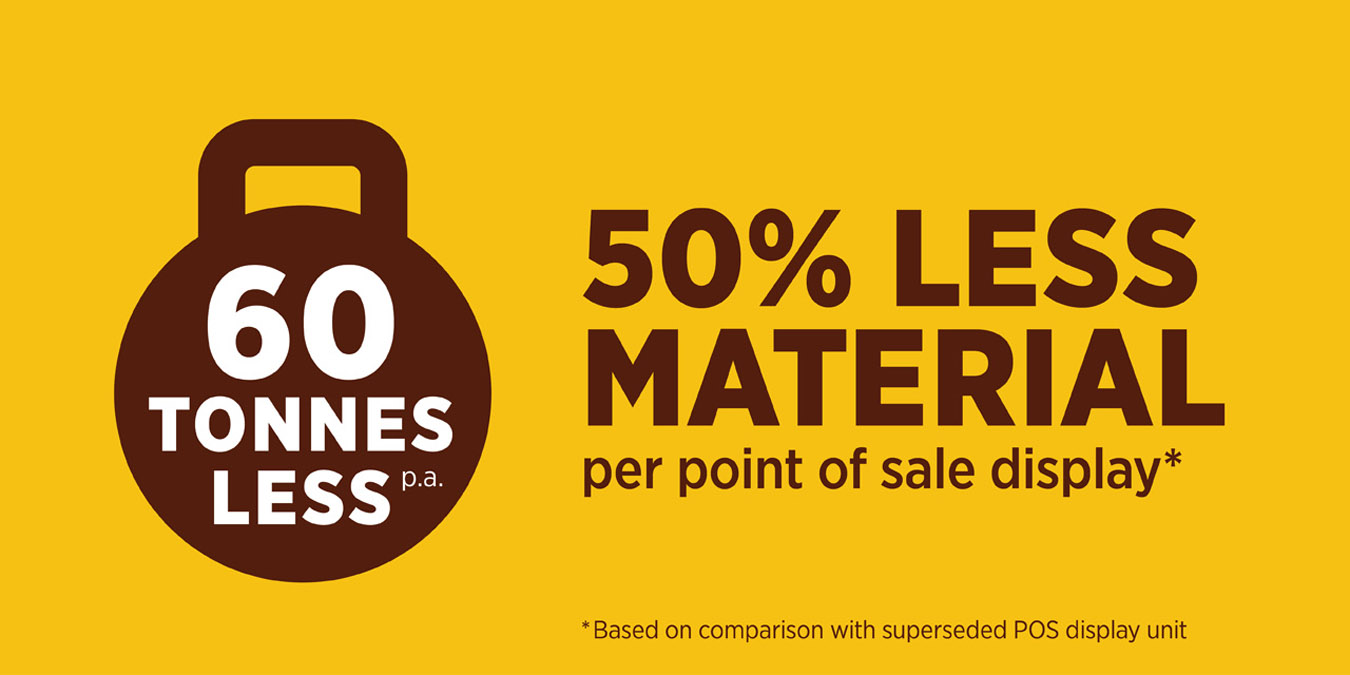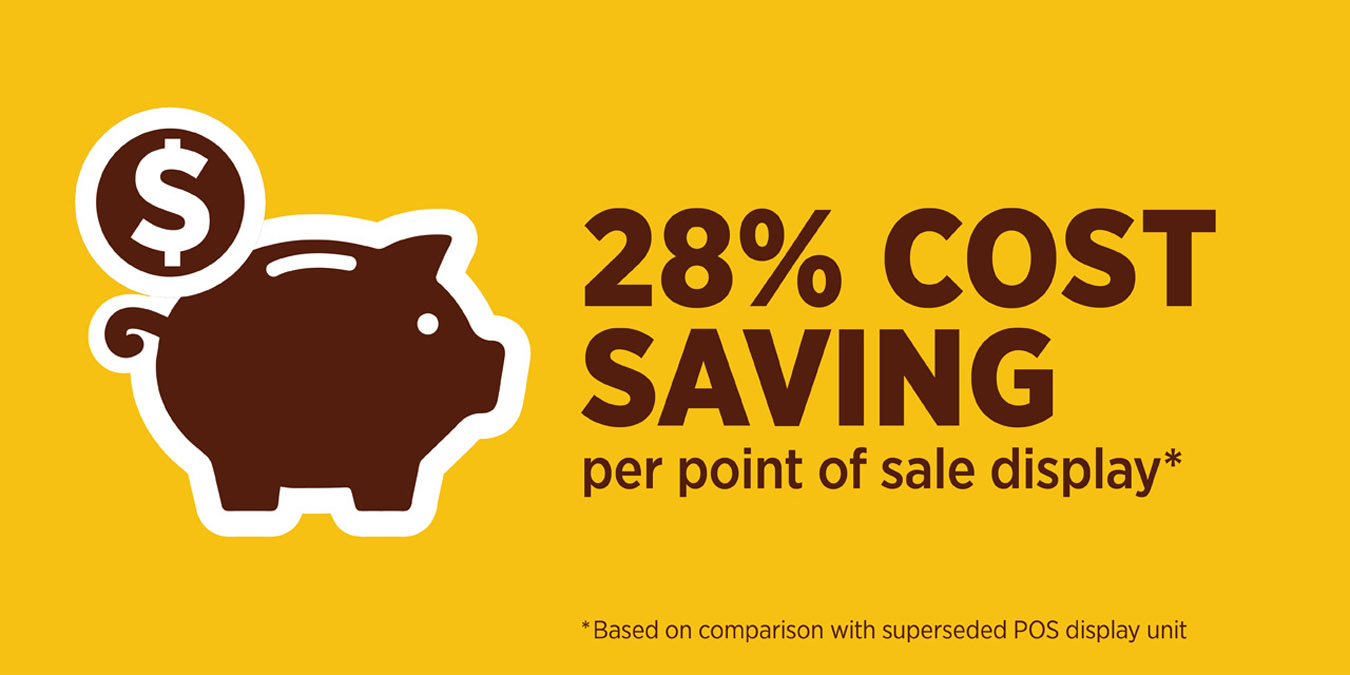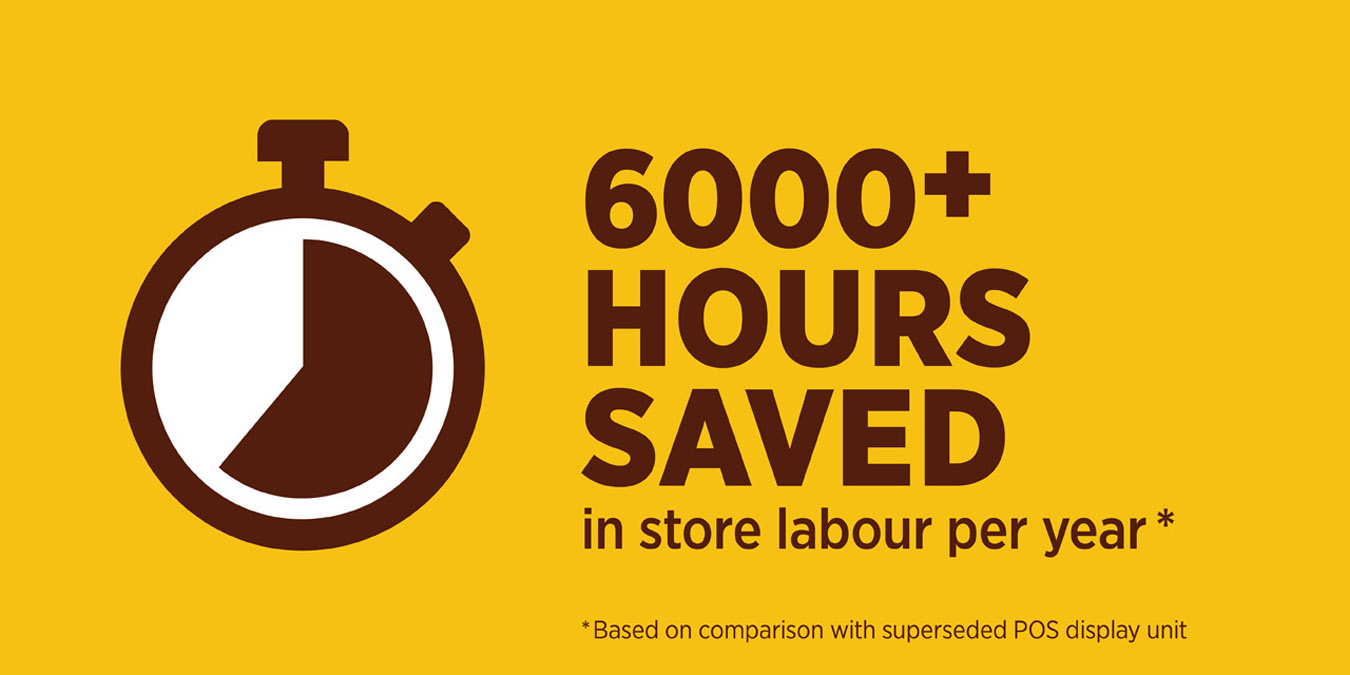Development of the DRP began with the SRP carton. In an effort to create a single format that solved all display requirements and worked seamlessly within the current supply chain, the team explored ways to stack, stabilise and add strength without diminishing existing functionality.
Mars Wrigley’s capability and the retail environment were considered at all times throughout this process. Collecting insights from stakeholders at all touchpoints, from manufacturing operations to in-field sales, retailers, retail staff and POS display providers to ensure that all stakeholders needs were met in the new design.
Multiple tear patterns were developed that enable two formats from one shipper; a stackable display or shelf display. Vertical tabs and slots were introduced to ensure stock weights could be supported in a stable manner up to 7 units high.
In-store, the design needed to be adaptable, stacking effectively as part of a larger display and also converting into the current SRP format for placement on shelf.
The introduction of DRP enables MARS to continue manufacturing one carton style while adding the flexibility of building in-store displays from existing store stock.
The labour required to build in-store displays is significantly reduced and the shippers can be diverted to a third-party location to create pre-packed displays if necessary.
Building display units from the existing shipper is more sustainable, reducing the amount of packaging material required to make each POS display unit.
Point of Sale presentation has been maintained by maximising the print process of the existing shipper carton and embellishing the DRP stacks with POS shrouds and header cards.
On shelf display has been maintained, and as products remain in their SRP throughout the process there is no longer a need to have single packs on shelf at the end of the promotion helping maintain product presentation and protection.

